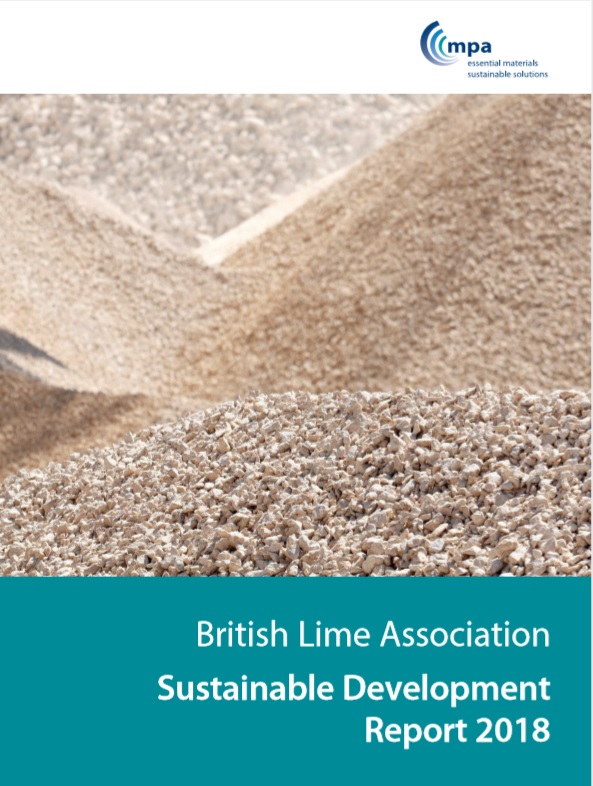
The UK lime sector has responded to improved conditions in the domestic market, and the increased demand from the iron and steel sector in 2017. Further, exports of lime by BLA Members have increased by 30% since 2006 and made up 26% of sales last year. These were the key findings of the British Lime Association’s (BLA) new 2018 Sustainable Development Report.
Following the launch of the MPA (
Lime is an essential material that we rely on every day. It has a diverse range of uses and is often an undetected ingredient in many important processes. When we turn on a tap, use our cars, add sugar to our tea or even write a shopping list, we do not consider the ingredients that have gone into these everyday items. Lime is the common product in all these materials.
Lime is also critical to the delivery of the Government’s plans to build more homes and renew national transport and energy infrastructure, as well as repairing and maintaining local roads, schools and hospitals.
Commenting, Richard Stansfield, Chairman of the British Lime Association, said: “I am proud of the continuing contribution that the lime sector makes to the UK economy, and our commitment to the high standards of environmental and safety performance that are demonstrated by our Sustainable Development Report. We are an essential material in so many supply chains and a thriving domestic lime industry remains vital to the UK.”
Other highlights within the report include:
• Targeting Zero Harm to all employees and contractors.
BLA Members are justifiably proud of the Health and Safety improvements they have implemented over recent years. Members continue to focus on the Zero Harm target and to work collaboratively to achieve this ambition.
• Engaging fully with local communities and striving to be a good neighbour.
BLA Members held 10 local community liaison meetings in 2017 and welcomed 472 visitors for liaison meetings, site tours, and visits.
• Minimising waste and maximising re-use and recycling.
All BLA Members and Associate Members continue to minimise the - waste they send to landfill, seeking recycling and recovery routes where possible.
• Reducing emissions in accordance with the MPA carbon route maps and Government objectives.
BLA Members and Associate Members manage carbon dioxide (CO2) emissions in accordance with the European Union Emissions Trading System (EUETS).
• Minimising and mitigating operational impacts.
BLA Members and Associate Members are regulated by the Environment Agency under the Environmental Permitting Regulations. As such, the sector implements the best available techniques for environmental protection and manufacturers comply with strict emission limits.






